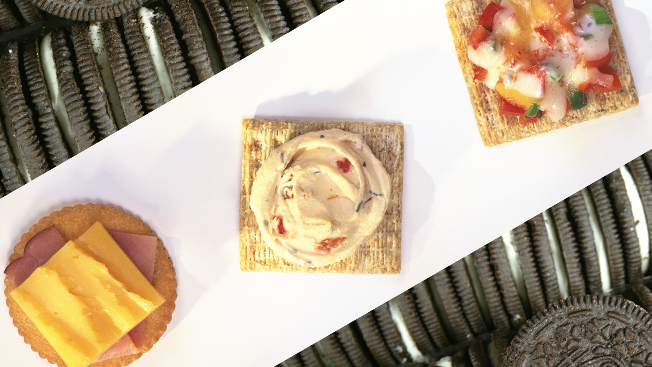Could technology push you to buy an extra pack of Oreos the next time you're grocery shopping? With more people glued to smartphones as they shop, Mondelez—the parent company of snack brands like Oreos, Ritz crackers and Trident gum—is enlisting startups to help it grab consumers' attention.
On Wednesday, Mondelez launched Shopper Futures—a three-month program asking startups to pitch their best marketing ideas to the snack giant. The idea is to think about how emerging technology like beacons and conductive ink—which transfers physical packaging into digital content—can get people to buy more snacks.
Startups can apply to be part of the program through June 27. Then in August, the companies will pitch their digital marketing and e-commerce ideas at Mondelez's East Hanover, N.J., office. From there, a handful of startups will be picked to work with marketers from eight brands and retailers. The teams will work together for 90 days to build pilot programs, with the possibility of scaling to larger campaigns if they move the needle.
Shopper Futures is replacing a program Mondelez debuted a few years ago called Mobile Futures. This time, the goal is to prove that digital can close the loop on marketing programs.
It's all part of a bigger push to make the snack brand more digital. It also plans to put Buy Now buttons on all media.
Adweek talked to Laura Henderson, Mondelez's U.S. head of media and communications, to learn more about what the brand is looking for from startups and how it plans to shake up traditional grocery shopping.
E-commerce is notoriously tough for packaged-goods brands. Why roll out this program now?
When you look at the path to purchase, it has been irreversibly disrupted. It looks fundamentally different than what it looked like a few years back, and we need to understand how we can dive in.
CPG historically has not been a leader in the space, but we're predicting that over half of growth is going to be driven by e-commerce over the next five years. It's not necessarily the biggest part of our business today, but we do think it can be the fastest-growing.
What did you learn from Mobile Futures that you're bringing into Shopper Futures?
Two years ago we were talking about [mobile], but it still felt future-forward. Now, when you look at media consumption patterns and how much time is spent on mobile as the first screen, it's overwhelming.
The majority of our sales are impulse-driven, so we really need to understand how to fit the right time with the right message. Mobile is one of the only mediums that follows people from the couch to the shelf, so to speak.
Can you name a successful Mobile Futures campaign?
One was a partnership between Stride and Waze. We were attempting to increase traffic in-store through the navigation app. We saw the potential of real-time, proximity-based messaging.
Also—and this wasn't necessarily through Mobile Futures—[there] is our further exploration of beacons. If we can understand how shoppers are moving throughout the store—when they're around the cookie and cracker aisle, for example—and hit them with a relevant message, we've found that there are exponentially higher returns.
Mobile will continue to play a prominent role in Shopper Futures, but we don't want to limit ourselves. We're interested in how overall technology is changing the face of retail, so even things like digitally enhanced packaging. How could we use conductive ink, for example, to create a new experience with the packaging?
What ideas are you looking for from the startups?
What we want to understand from the startups is: What is your concept? What's the use case? And what is the potential application for our brands?
What is the tie-in with the retailers?
We are actively seeking innovative retailers to partner with us. We already have a few on board, but we're looking to pair each brand with a retailer.
It's a team of a brand, a shopper marketer and a startup that will work in tandem to build these pilots. It allows us to develop solutions that are realistic, practical and scalable that can work in the real world.
Were retailers involved in Mobile Futures?
We had a few that came on later, and they provided feedback and guidance. What we're saying now is, "Let's make sure you're on board," but let's do it so that we can focus on the shopper early on.
Twitter and MediaVest are involved in this program. What will they do?
Twitter is our media partner. Because of their earlier announcements on social commerce, it was a logical fit to pair up with them. We see them helping consult on some of the projects and providing potential applications on Twitter.
For this to work, it needs to be part of a broader, connected-media experience. [Our media agency] MediaVest is going to bring the voice of the audience in and help us plug this program into the work that we're doing on a larger scale.








